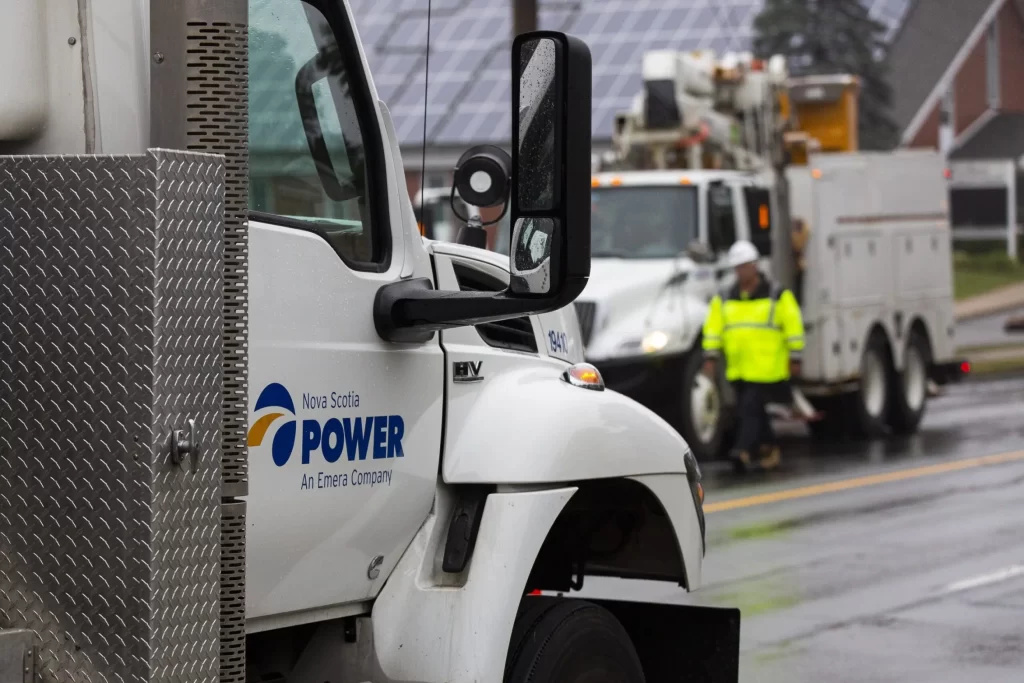
That’s because the private utility’s more-than-well-compensated executives prioritize shareholders over customers, profits over service.
So, Nova Scotia Power Inc. wants its customers — which is to say, us — to foot the remaining $26.4 million “restoration costs” from September 2022’s “unprecedented weather event,” otherwise known as Hurricane Fiona.
First, it’s worth noting that we’re already on the hook for $89.5 million in restoration costs the power company was able to designate as Property, Plant and Equipment — capital — which means it didn’t have to go, cap in hand, to the province’s utility and review board to get approval to charge that back to us. Plus interest, of course.
The remaining $26.4 million is designated Operating, Maintenance and General (OM&G), so the company needs the blessing of the utility board to tack it onto our bills.
So, big picture, $114 million more.
OMG without the &…
Hurricane Fiona, as NSP officials were quick to remind the UARB in their Application for Deferral of Hurricane Fiona Costs…
… brought an extended period of extreme winds and heavy rain … with sustained hurricane-force winds of over 100 kilometres per hour and peak gusts of approximately 160 kilometres per hour. The storm caused widespread damage to the Nova Scotia Power Inc. transmission and distribution system and, at the height of the storm, approximately 415,000 customers lost power…
A bad storm, yes. Absolutely.
Unprecedented? Hardly.
Unpredictable in these times? Not at all.
Big picture again.
It was nearly 50 years ago, in 1975, that an American geochemist named Wallace Broeker introduced the phrases “climatic change” and “global warming” into our lexicon. A decade before that, writers like Rachel Carson (Silent Spring, 1962) and Edward Abbey (Desert Solitaire, 1968) were already warning we were on our way to environmental hell if we didn’t change our ways.
In 1992, 1,700 of the world’s leading scientists issued a “Warning to Humanity:”
Human beings and the natural world are on a collision course. Human activities inflict harsh and often irreversible damage on the environment and on critical resources. If not checked, many of our current practices put at serious risk the future that we wish for human society and the plant and animal kingdoms, and may so alter the living world that it will be unable to sustain life in the manner that we know. Fundamental changes are urgent if we are to avoid the collision our present course will bring about.
In spite of that, one year later, Nova Scotia’s not-short-lived-enough Donald Cameron Tory government — in an act of environmental, political and economic stupidity — handed Nova Scotia’s publicly owned electrical utility back to the private sector and essentially told its shareholders to treat the “regulated” private utility as their own personal ATM.
Thanks to guaranteed annual returns — 8.75 to 9.25 percent return on equity — they’ve done exactly that for more than 30 years.
Nova Scotia Power’s more-than-well-compensated executives have continuously prioritized shareholders over customers, profits over service. The results have been inevitable.
For six years running — from 2016 to 2022 — Nova Scotia Power failed to meet even half of the UARB’s basic reliability and customer service performance targets.
In August 2023, the UARB belatedly fined the company $750,000 for 2022 after previously fining it $350,000, which had resulted in no change in behaviour.
The board made clear its displeasure:
As previously stated by the Board, customers are entitled to receive an appropriate level of service for the rates and fees they are charged by the utility. It is not acceptable that non-compliance of the performance standards has become a normal occurrence. [emphasis added]
In its defence, Nova Scotia Power made the case that Hurricane Fiona — not to forget all that climate change stuff (who could have predicted?) — was to blame for the company’s abysmal failure to meet targets, especially for restoring power to customers.
According to the power company’s own data, the number of days from first reported outrage to full restoration across Nova Scotia after Fiona ranged from 14.41 days on the Eastern Shore to 16.81 days in the province’s Northeast.
That means that, in every region of the province, it took at least two weeks from outages beginning to ending. The average restoration time was more than four days!
The UARB didn’t completely buy into the power company’s climate-change-devil-made-me-do-it defence:
While these are relevant circumstances, the Board also recognizes that one of the consequences of our urgent need to rapidly decarbonize, in the effort to stave off even more dire climatic changes, is an increasing trend towards electrification. This means that despite the changing climate, the need for a reliable electrical grid is at least as important (and likely more important) than ever. If more frequent and damaging storms are becoming the ‘new normal’, NS Power needs to ensure that its performance, not just its investment plans, keeps up with these changes…
The increasing intensity, severity, and frequency of adverse weather events are not new phenomena… It is incumbent upon NS Power to appropriately address the challenges of climate change and adverse weather events.
It will be interesting to see — if the company fails to meet its targets again this year — whether the UARB’s displeasure translates into a willingness to impose the Houston government’s recently legislated maximum $ 25 million penalty on Nova Scotia Power.
Don’t hold your breath.
The only way to convince NSP’s shareholders to convince NSP’s executive to prioritize service is to suspend shareholders’ guaranteed returns (and executive bonuses) until the company actually meets those reliability and customer service targets.
Don’t hold your breath on that one either.
The UARB hearing into NSP’s application will. be what’s known as a “paper hearing.” You have until February 2, 2024, to make written comments at board@novascotia.ca.
***
A version of this column originally appeared in the Halifax Examiner.
To read the latest column, please subscribe.







 STEPHEN KIMBER, a Professor of Journalism at the University of King's College in Halifax and co-founder of its MFA in Creative Nonfiction Program, is an award-winning writer, editor and broadcaster. He is the author of two novels and eight non-fiction books. Buy his books
STEPHEN KIMBER, a Professor of Journalism at the University of King's College in Halifax and co-founder of its MFA in Creative Nonfiction Program, is an award-winning writer, editor and broadcaster. He is the author of two novels and eight non-fiction books. Buy his books